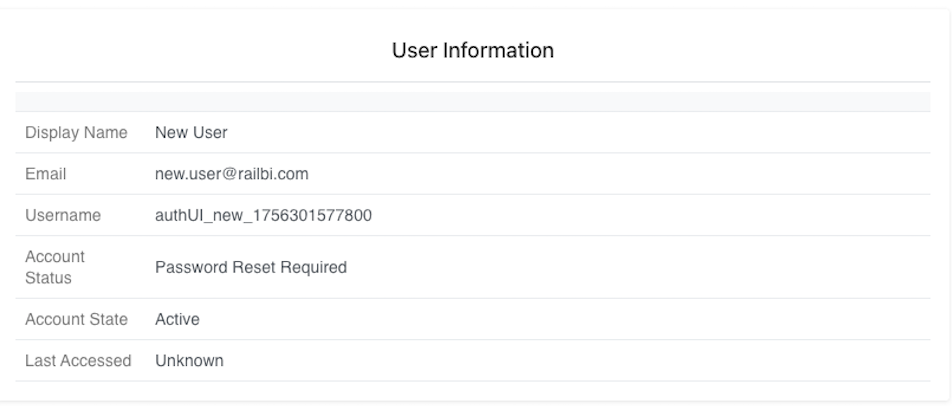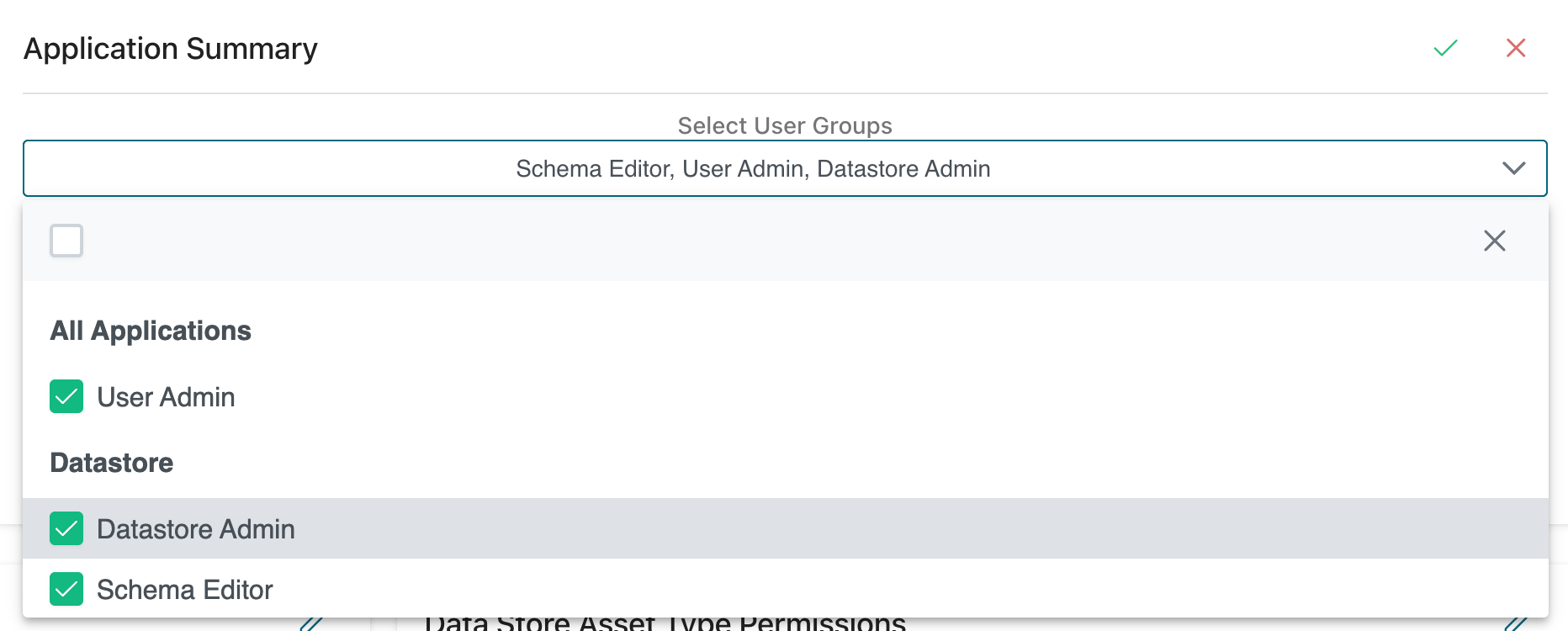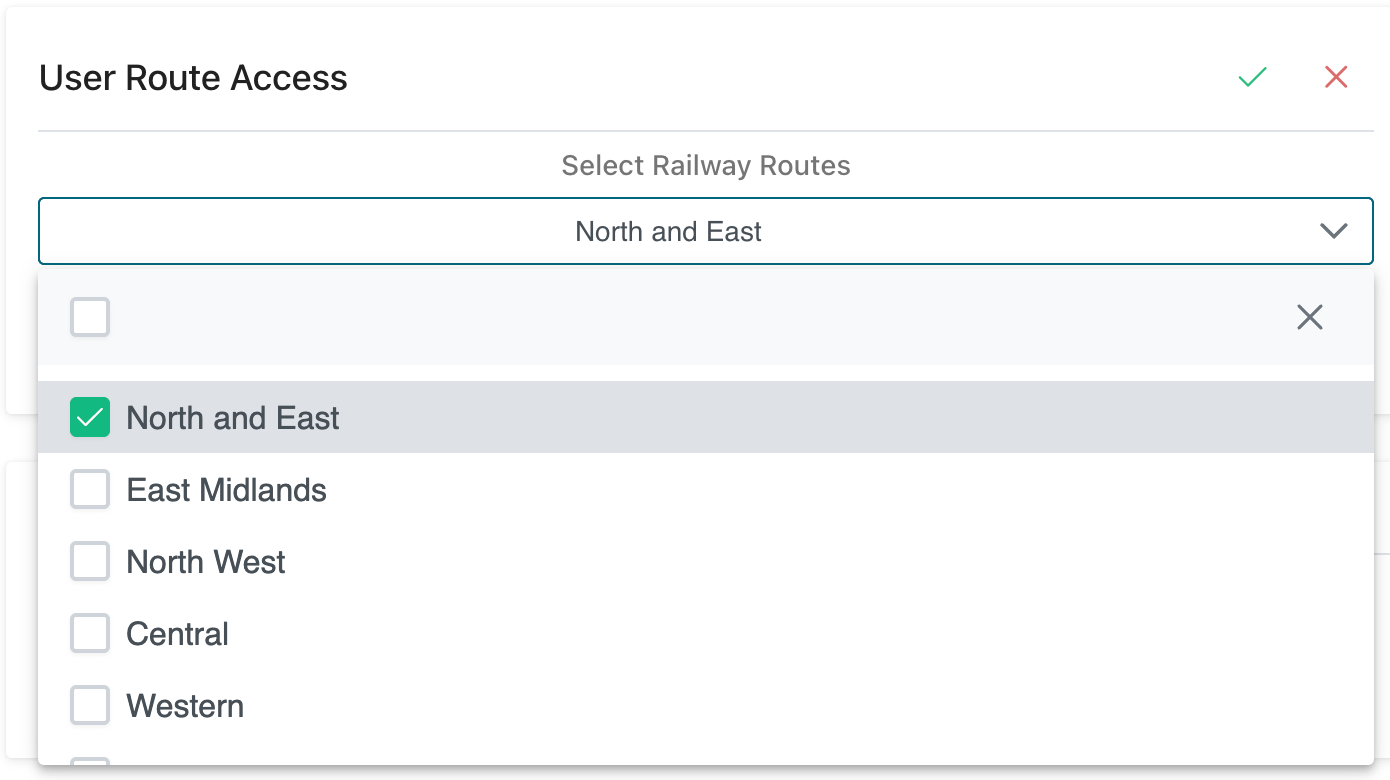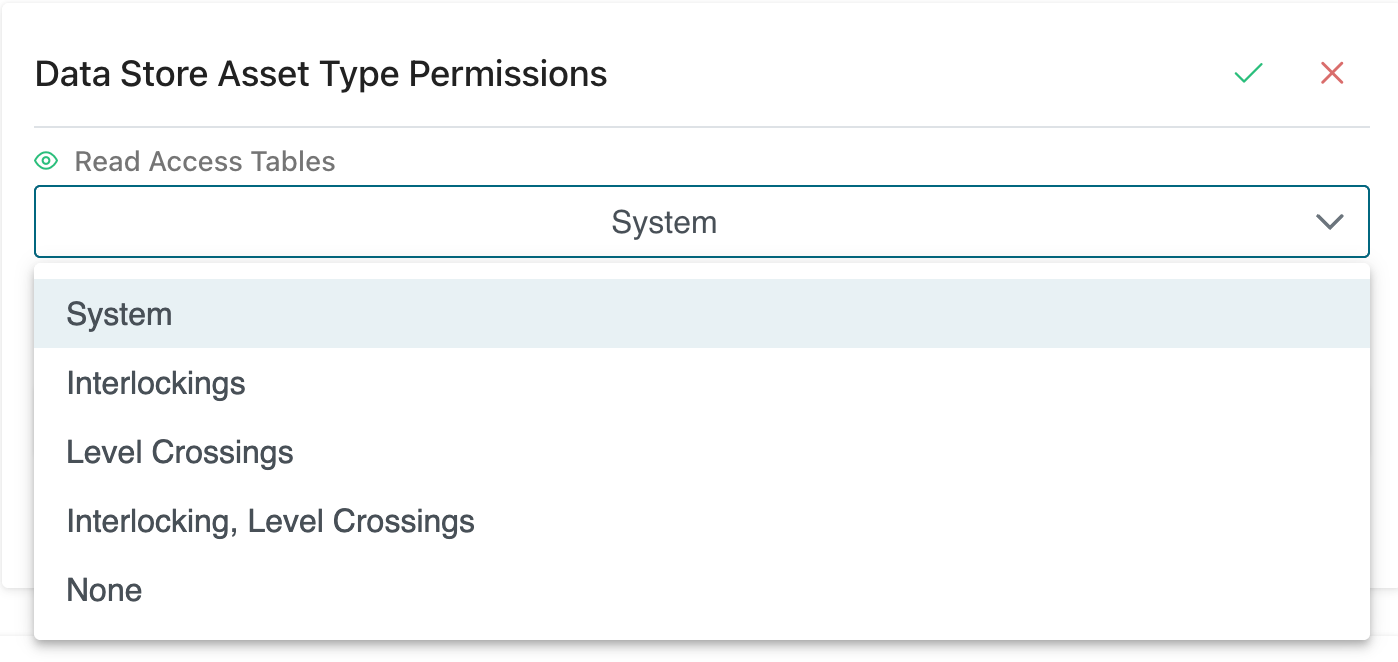User Profile
The user profile view allows a closer look at permissions, routes and regions assigned to the user. Any edits or changes to permissions, routes or regions can also be completed on this page.
User Information
The user information section displays all of the users information.

Each row displays the following information:
| Label | Information |
|---|---|
| Display Name | The display name of the user (first name + last name). |
| Email Address | The email address registered for that user. |
| Account Status | The current status of the account. |
| Account State | Active / Suspended |
| Last Accessed | When the user account was last used. |
If account status is password reset, the user has not logged in.
If the account status is external provider, this means their network rail SSO account is linked and they have signed in.
Edit User Information
User information can be edited under Rail BI permissions.
Application Summary
The application summary shows which roles have been assigned to the user.

Edit Application Roles
To edit application roles, select the Edit icon at the top right of the Application Summary.
Click the dropdown box to select or remove application roles for the user.

Once all required changes have been made, select the Save icon.
To discard changes, click the Cancel icon.
Route Access
The user route access section displays which route(s) a user has been assigned.

There is no requirement for a route to be set for a user. Routes act as a filter for workbanks that allows a user to view only specific routes interventions and data.
Edit Route Access
To edit user routes, select the Edit icon at the top right of the Route Access section.
Click the dropdown box to add or remove routes from the selected user.

Once all required changes have been made, select the Save icon. To discard changes, click the Cancel icon.
Datastore Asset Permissions
This section displays which assets the user has been granted Read / Write access for.
Select either the Read or Write dropdown and select the required asset type.

Edit Datastore Asset Permissions
To edit which assets the user can Read / Write, select the Edit icon at the top right of the asset permissions section.

Once all required changes have been made, select the Save icon. To discard changes, click the Cancel icon.
Rail BI Permissions
The Rail BI permissions section displays what group the user is assigned to, their access role along with the specific permissions that have been assigned.

Some items may have been added or removed based on the default role. This information can be clarified by selecting the View Legend icon.

Edit Rail BI Permissions
To edit which permissions the user is granted for Rail BI, select the Edit icon at the top right of the Rail BI permissions section.
User Information can be edited in this section.

To suspend a users access, select the User is Suspended toggle. If this is currently enabled, selecting it again will restore the user access.
Once all changes have been made, select the Save icon.
To discard changes, click the Cancel icon.
Elevated Permissions
When a user is granted permissions that are higher then standard viewer level of access, the permissions are set to automatically expire 1 year from the date they were granted.
The expiry date is displayed in the Elevated Permissions section at the bottom of the user profile.

Elevated Permissions Extension
Once the expiry date is reached, the user will be sent an email to confirm they still require the elevated permissions. When the confirmation link is clicked from the email, the permissions will be extended for a further year.
Should the user fail to click the link within 2 weeks, their elevated access will automatically be revoked and they will only have viewer level access. Elevated permissions can be re-issued by manually adding the permissions for each application.